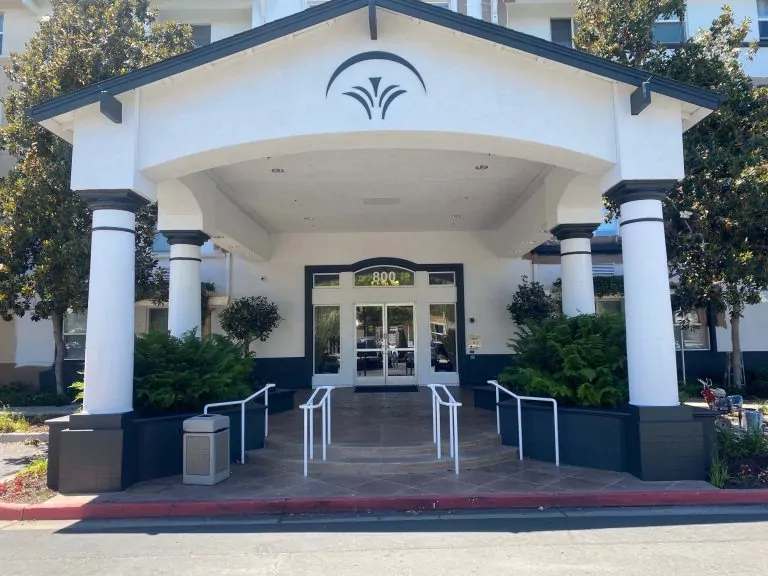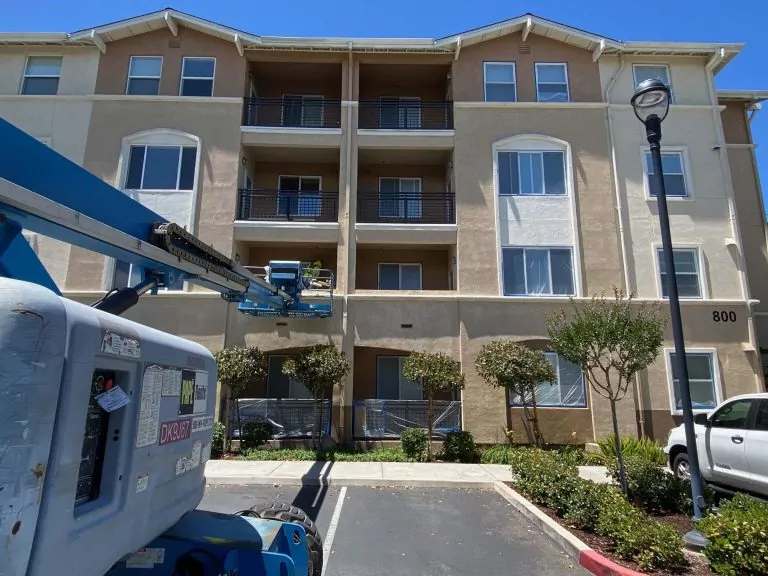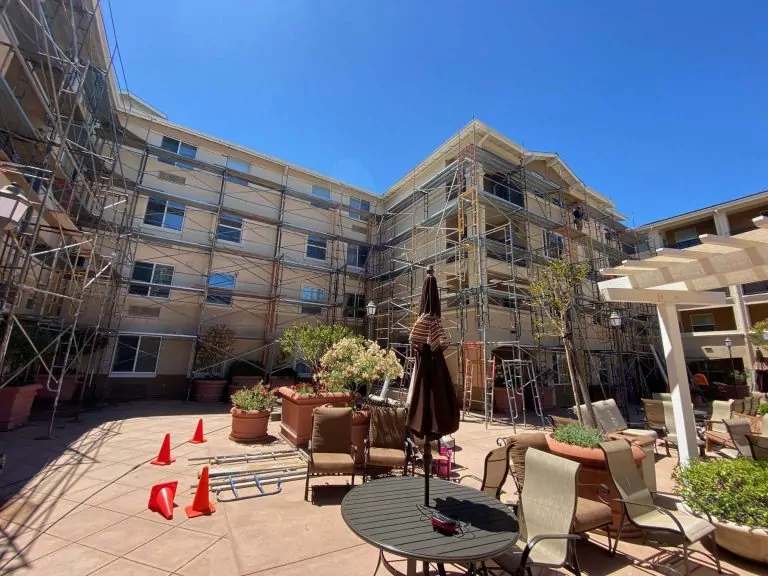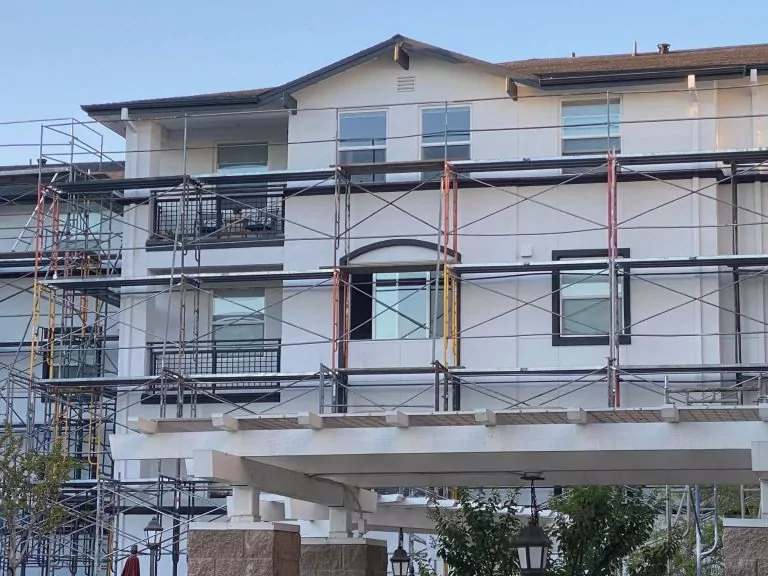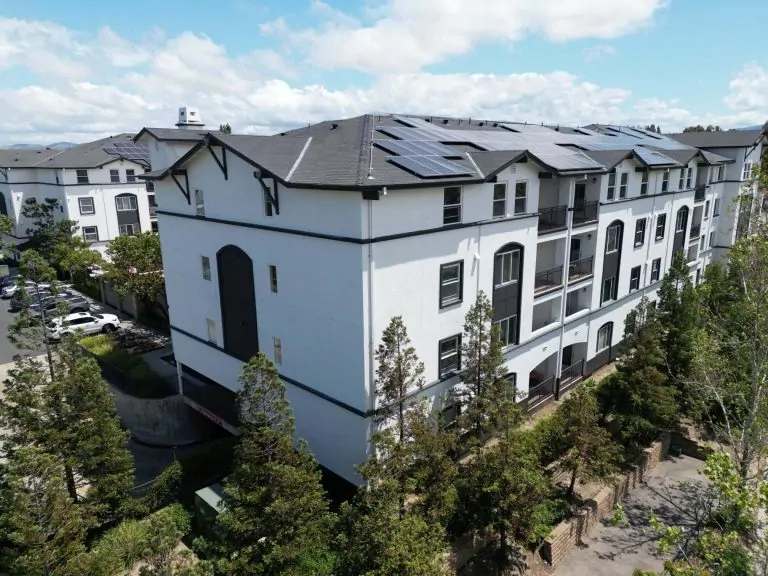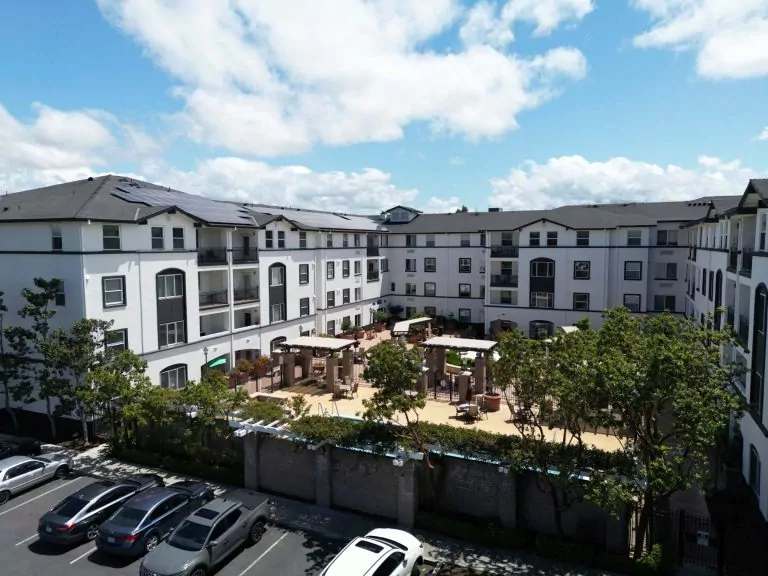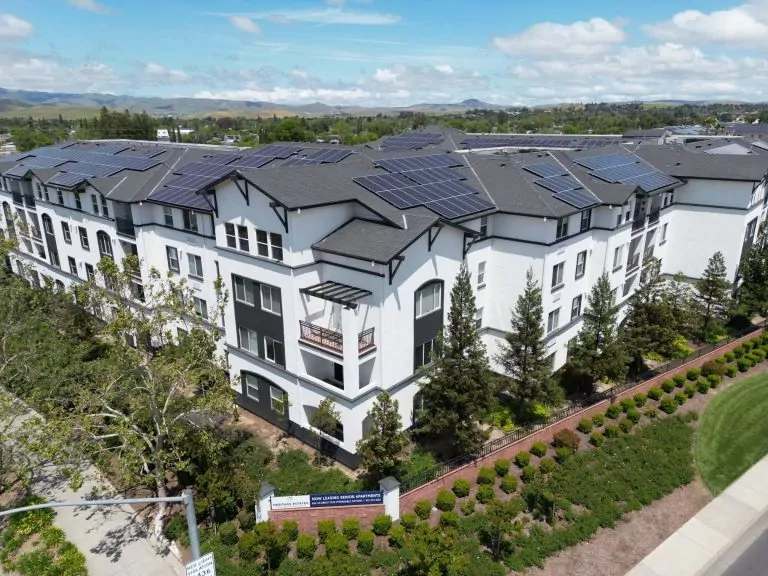Painting the outside of commercial buildings in the San Ramon, CA area is crucial for enhancing their appearance and value. Whether it’s condos, apartments, or offices, a fresh coat of paint can work wonders. However, this task is not without challenges, especially when it comes to ensuring the safety of everyone involved – from painters to employees and residents inside.
In fact, even seasoned painting businesses like Custom Painting, Inc. occasionally run into problems. Let’s explore how a painting project can not only beautify a structure but also safeguard the people it surrounds.
About the Building
Heritage Estates is a senior living facility established in 2009 in Livermore. As per Klein Financial Corporation, the facility covers 8.38 acres of land and has a gross building area of nearly 244,000 square feet. Further, it has 250 units, and 40% of them are for people with less money. Overall, the building consists of two main sections:
- A big apartment building where 190 folks can live on their own.
- Another building with 60 places where they help you more if you need it.
Exterior Features
The senior apartment building has a square shape with one side missing when observed from above. It has about 20 patios and balconies for the residents to enjoy the view. The building stands at four stories, with heights varying from 9 to 11 feet.
In specific places, the stories can reach up to 13 feet. The building’s exterior walls were originally painted white, with dark colors for the roofing, railings, trim, and fascia.
The Painting Process
A team of 8 to 15 painters worked on the painting project at different times. They used scaffolding or boom lifts to reach these three areas – the balconies, patios, and courtyards. They applied the paint with an airless pump sprayer. The painting work involved utilizing two kinds of Sherwin-Williams paint:
- Stucco Walls: The painters selected Sherwin-Williams A-100 flat for the stucco walls.
- Metal Balcony Railings: The balcony railing received a coating of Sherwin-Williams DTM paint (direct-to-metal).
The initial project phase utilized approximately 1,500 gallons of paint. However, the second phase will need around 2,500 more gallons.
Safety Measures
During the commercial painting project at Heritage Estates Livermore, the entire crew went above and beyond to protect both the adjacent finishes and the residents’ belongings.
Use of Drop Cloths
To prevent any accidental damage from paint drips, they diligently shielded items with drop cloths. This helped to cover and shield items located near the painting area.
The diligent use of drop cloths was a preventive measure to maintain the integrity of the surroundings and protect the property and possessions of the building’s residents or users.
Use of Plywood Ceilings
When undertaking a commercial painting project, especially in multi-story buildings like Heritage Estates Livermore, painters often use scaffolding to access higher areas of the building’s exterior. Scaffolding provides a platform for the painters to work efficiently and reach areas that would otherwise be challenging to access.
However, when working at heights, there is always a risk of objects or tools accidentally falling from the scaffolding and potentially harming people below or damaging property. To address this safety concern, the crew took additional precautions by attaching plywood ceilings to the scaffolding.
The plywood ceilings act as protective barriers below the scaffolding. They create a physical shield that prevents any objects, like paint cans, tools, or equipment, from falling off the scaffolding and reaching the ground or walkways below.
Aerial Boom Lifts
Aerial work platforms were used to reach areas that were hard to access or high. These lifts temporarily enable access to elevated spots and are regularly used by painters.
Safety was a top priority, especially when operating boom lifts. The crew took no chances and wore safety fall-prevention harnesses to minimize the risk of falls, as it provided an extra layer of protection.
Barricades
Recognizing the need to safeguard both passersby and the project itself, the crew took a proactive step by installing safety barricades around the property. These barricades served as essential warning signs. They assisted in effectively notifying people of ongoing construction activities and creating a safe perimeter to prevent potential accidents.
Various kinds of barricades that were used are outlined below:
- Folding barricades (Types I, II, III)
- Plastic pedestrian barricades
- Steel barricades
Restrictions and Considerations
The Heritage Estates Livermore painting project presented a set of restrictions and considerations that the crew needed to consider. A few of these included:
Weight Limits
As mentioned earlier, the team had to utilize Mobile Elevating Work Platforms (MEWPs), including aerial boom lifts. These lifts have a certain amount of weight they can carry. The crew had to follow these limits carefully. Exceeding the lift’s weight capacity could result in tipping over. This was a potential harm to both themselves and individuals nearby.
Therefore, the crew considered the operator’s weight, tools, and required materials. Before using the lift, they must ensure that the total weight stays within the allowed capacity. They also had to avoid using boom lifts for moving heavy things.
Blocking Sidewalks
Taking on a commercial painting project adjacent to bustling streets and sidewalks can be a daunting task. The presence of scaffolding or aerial lifts adds an extra layer of complexity to the project and requires precise planning to maintain safety for everyone involved.
The crew erected barriers and temporary fencing to create a clear separation between the active painting site and the busy streets and sidewalks. These sturdy barriers acted as physical barriers, which helped in preventing any unauthorized entry into the work zone. By establishing this boundary, the crew minimized potential hazards and ensured that the public remained at a safe distance from the ongoing construction.
Conclusion
Painting from a height was one of the difficulties we overcame while working on the project, and we were also mindful of the workers’, renters’, drivers’, and pedestrians’ safety. Despite these difficulties and worries, we modified the color scheme of the senior apartment complex to the client’s delight.
Work with Custom Painting, Inc. to plan your upcoming commercial painting projects. We can take care of a wide range of tasks including awning removal, wood rot repair and much more. If you have a specific idea in mind for your upcoming painting project or you want a professional opinion to guide your color choices to improve your business.
Transform your space today with the help of our paint experts! Call us at 925-866-9610 or message us on our contact page for a free consultation!


